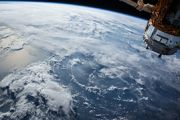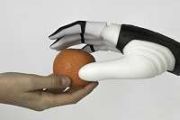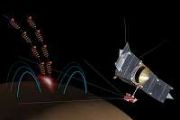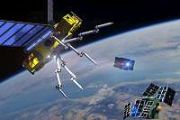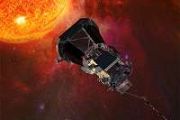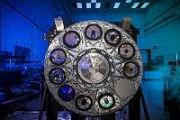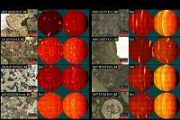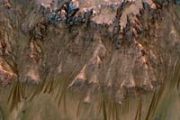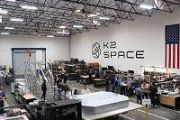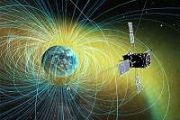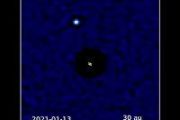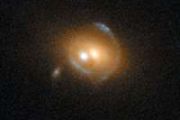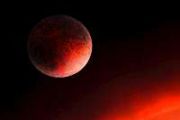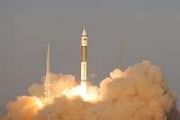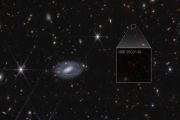
Copernical Team
Overview Energy debuts airborne power beaming milestone for space based solar power
 Overview Energy has revealed an airborne power-beaming demonstration that transmitted energy from a moving aircraft to a ground receiver 5 kilometers below, marking its second major step toward delivering grid-scale solar power from space.
The test used the same optics and laser chain planned for space operations and showed that the system can send power via near-infrared light from an air
Overview Energy has revealed an airborne power-beaming demonstration that transmitted energy from a moving aircraft to a ground receiver 5 kilometers below, marking its second major step toward delivering grid-scale solar power from space.
The test used the same optics and laser chain planned for space operations and showed that the system can send power via near-infrared light from an air Solar ghost particles seen flipping carbon atoms in underground detector
 Scientists have recorded solar neutrinos changing carbon-13 into nitrogen-13 inside the SNO+ detector in Canada, marking the first observation of this specific interaction between neutrinos and carbon nuclei.
Neutrinos, sometimes called ghost particles, rarely interact with matter even though trillions pass through every person each second, and they are produced in nuclear reactions such a
Scientists have recorded solar neutrinos changing carbon-13 into nitrogen-13 inside the SNO+ detector in Canada, marking the first observation of this specific interaction between neutrinos and carbon nuclei.
Neutrinos, sometimes called ghost particles, rarely interact with matter even though trillions pass through every person each second, and they are produced in nuclear reactions such a Thorium plated steel points to smaller nuclear clocks
 Last year a UCLA-led team achieved a long-sought goal in nuclear spectroscopy by making radioactive thorium-229 nuclei absorb and emit photons in a controlled way, a capability scientists had pursued for about 50 years. That work, first proposed by the group in 2008, opened the door to nuclear clocks with very high precision that could influence navigation and tests of fundamental physics.
Last year a UCLA-led team achieved a long-sought goal in nuclear spectroscopy by making radioactive thorium-229 nuclei absorb and emit photons in a controlled way, a capability scientists had pursued for about 50 years. That work, first proposed by the group in 2008, opened the door to nuclear clocks with very high precision that could influence navigation and tests of fundamental physics. Star wobble reveals black hole dragging spacetime
 Astronomers have reported the first clear observation of a swirling distortion in spacetime produced by a rapidly spinning black hole, seen through the motion of material left over from a disrupted star.
The team, led by researchers at the National Astronomical Observatories of the Chinese Academy of Sciences with support from Cardiff University, studied AT2020afhd, a tidal disruption even
Astronomers have reported the first clear observation of a swirling distortion in spacetime produced by a rapidly spinning black hole, seen through the motion of material left over from a disrupted star.
The team, led by researchers at the National Astronomical Observatories of the Chinese Academy of Sciences with support from Cardiff University, studied AT2020afhd, a tidal disruption even Uranus and Neptune may be rock rich worlds
 The Solar System is often divided into four inner rocky planets, two gas giants, and two ice giants thought to be dominated by water and other volatiles, but new work from the University of Zurich suggests Uranus and Neptune may contain much more rock than assumed so far. The study indicates that these distant planets can be consistent with interior structures that are either ice rich or rock ri
The Solar System is often divided into four inner rocky planets, two gas giants, and two ice giants thought to be dominated by water and other volatiles, but new work from the University of Zurich suggests Uranus and Neptune may contain much more rock than assumed so far. The study indicates that these distant planets can be consistent with interior structures that are either ice rich or rock ri NASA JPL Unveils Rover Operations Center for Moon, Mars Missions
 The center leverages AI along with JPL's unique infrastructure, unrivaled tools, and years of operations expertise to support industry partners developing future planetary surface missions.
NASA's Jet Propulsion Laboratory in Southern California on Wednesday inaugurated its Rover Operations Center (ROC), a center of excellence for current and future surface missions to the Moon and Mars. D
The center leverages AI along with JPL's unique infrastructure, unrivaled tools, and years of operations expertise to support industry partners developing future planetary surface missions.
NASA's Jet Propulsion Laboratory in Southern California on Wednesday inaugurated its Rover Operations Center (ROC), a center of excellence for current and future surface missions to the Moon and Mars. D Lunar dust study links space weathering to changes in Moon ultraviolet brightness
 SAN ANTONIO - Southwest Research Institute (SwRI) scientists working with researchers at UT San Antonio have analyzed Apollo lunar soil samples to determine how space weathering alters the Moon's surface and affects its far-ultraviolet (FUV) reflectance. The team examined how exposure to solar wind and micrometeoroid impacts over long periods changes the FUV spectral response of lunar grains, us
SAN ANTONIO - Southwest Research Institute (SwRI) scientists working with researchers at UT San Antonio have analyzed Apollo lunar soil samples to determine how space weathering alters the Moon's surface and affects its far-ultraviolet (FUV) reflectance. The team examined how exposure to solar wind and micrometeoroid impacts over long periods changes the FUV spectral response of lunar grains, us ICE-CSIC leads a pioneering study on the feasibility of asteroid mining
 Much remains to be known about the chemical composition of small asteroids. Their potential to harbour valuable metals, materials from the early solar system, and the possibility of obtaining a geochemical record of their parent bodies makes them promising candidates for future use of space resources. A team led by the Institute of Space Sciences (ICE-CSIC) has analyzed samples of C-type asteroi
Much remains to be known about the chemical composition of small asteroids. Their potential to harbour valuable metals, materials from the early solar system, and the possibility of obtaining a geochemical record of their parent bodies makes them promising candidates for future use of space resources. A team led by the Institute of Space Sciences (ICE-CSIC) has analyzed samples of C-type asteroi Video: How to see the Geminid meteor shower
Verifying that you are not a bot
A pioneering study on the feasibility of asteroid mining
Verifying that you are not a bot




